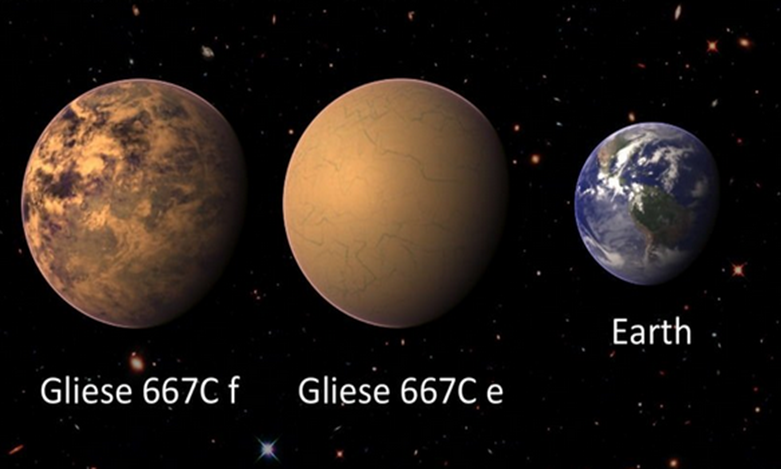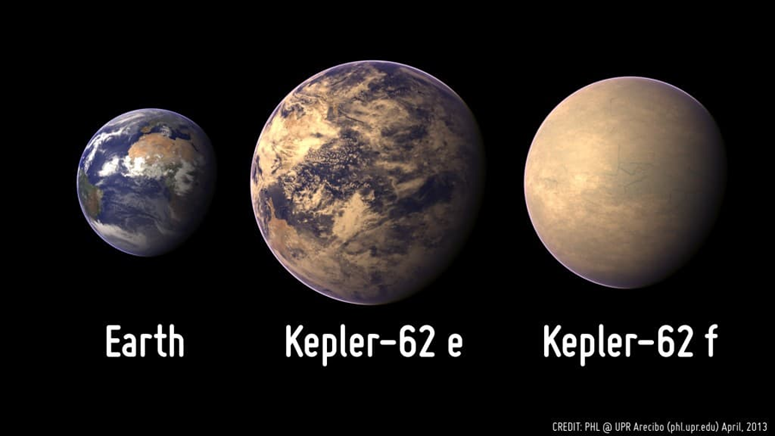?Which planets may host life forms

Illustration explaining what a dwarf object is? (NASA.gov)
Some may be less livable than scientists thought
In a recent groundbreaking astronomical study, scientists identified through a 3-D chemical experiment the planets that could potentially be home to alien life forms, and subsequently eliminated those that did not.
The new research aims to help narrow down the worlds that astronomers should investigate as they try to find extraterrestrial life.
In fact, scientists have known for a long time about a large number of planets outside the solar system, or worlds orbiting stars far from our solar system, as telescopes have already helped us classify thousands of planets, and the future will witness many discoveries. But it is very difficult for scientists to show the conditions on those planets, because they are very different from Earth.

In order to limit these conditions, the researchers who carried out the new study combined a variety of data to find out how habitable planets might be around dwarf stars of the spectral classification type "M", which are relatively cold and much less bright compared to the sun, for example, and may form 70 percent of the stars in our galaxy, the Milky Way. It is believed that the planets surrounding those dwarf stars are the most likely place to find alien life in it, because they are abundant and therefore easy to find.
Indeed, the study helped researchers redefine our understanding of whether a planet is likely to be habitable, adding new questions to be asked about planets given the radiation from a star and how the planets rotate.
That, in turn, helped them figure out how radiation from the star raises or lowers the temperature of the atmosphere surrounding a planet. Thus, scientists can find out if there is water in a world outside our solar system, and therefore whether life forms are likely to grow on its surface.
Among the other discoveries made by the researchers is that the worlds surrounding active stars lose, among others, large amounts of water, which turns into steam. Planets around quiet stars are more likely to retain their water, and thus are more likely to be home to alien life.
They also found that planets surrounded by thin layers of ozone are exposed to dangerously high levels of ultraviolet radiation. And those planets are unsafe for any complex life that could try to thrive on their surface, even if they might seem ideal based on their favorable temperature.

The latest study was carried out by researchers from Northwestern and Colorado Boulder Universities, the Virtual Planet Laboratory of NASA and the Massachusetts Institute of Technology. It is scheduled to be published this week in The Astrophysical Journal.
Howard Chen, the first researcher in the study from Northwestern University in the United States of America, spoke in this regard, and said, "Throughout human history, the issue of the existence of life outside Earth or not was merely philosophical speculation. Only in recent years have we come to possess modeling tools." and the monitoring technology needed to scientifically address this issue.”
Scientists are now working to determine which planets we should study.
In a related context, Daniel Horton, the study's lead researcher, said, "Many stars and planets have not yet been discovered, which means that there are many targets that researchers will seek. Our study may help determine the number of places we have to direct our telescopes to."
In fact, scientists have the means to find water vapor and monitor other data of importance in knowing whether a planet is habitable. The Hubble Space Telescope is in service, and the James Webb Space Telescope will soon be launched to search for signs of life on planets. far. The new research should help pinpoint where scientists should look for life in the galaxy.

"Are we alone in the universe?" continues to be one of the biggest outstanding questions, Chen concluded. "But if we can predict which planets are most likely to host life forms, we may be closer to providing an answer in our lifetime."
Source: websites

